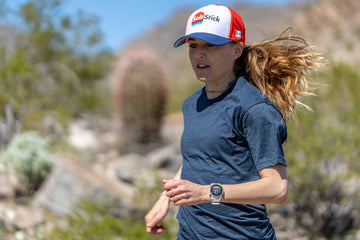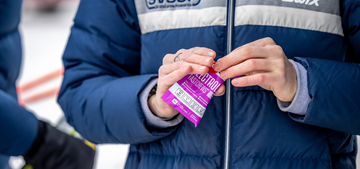
Guest Author: Ben Hoffman, SaltStick-sponsored athlete and 8-time Ironman Winner.
The process of dialing in my nutrition for Ironman racing has been a long one, and something that continues to evolve each season as I learn and experiment. Looking back to my earliest days in the sport, I had virtually no idea how to best fuel my efforts, so I constantly tested new ideas in training and racing. I can remember very clearly that during one of my first Ironmans in 2010, I even took a couple of candy bars onboard during the bike leg! It really was a scattershot approach with varied outcomes, the recurring theme being GI distress at some point in the marathon.
I knew I needed to optimize my strategy, but I was unsure where to turn, and frankly, I was embarrassed to ask for help. After all, I was a professional, and my pride and ego initially prevented me from taking the necessary steps to improve by asking my peers and other experts for help.
Fast forward to the spring of 2010, and I was on a training ride in Boulder, Colorado, with the legend Chrissie Wellington. Chances are she would not remember the conversation or advice given on that day, but it stuck with me like glue: eliminate the solids from your race fuel, put a huge emphasis on hydration (not just water but electrolyte too), and be cognizant of the timing of any caffeine.
With these cues in mind, I began to tailor my nutrition and hone in on a plan that would lead me to multiple Ironman victories and considerably less gut issues than before. To be clear, I think that nutrition is an evolving science and extremely individual, as well as something that everyone should revisit frequently to find any small improvements.
That said, here are some of my most important rules that might provide a starting point or at least a few ideas if you are struggling to nail your long-distance nutrition.
Focus on fueling with liquids
It's much harder for the gut to process solid foods while exercising at a high level, as blood is pulled away from the stomach and it, therefore, becomes less efficient.
Really emphasize hydration
Ideally, your carbohydrate solution is fairly dilute (in the 6-10% range) in order to facilitate better digestion and muscle function. Hydrating does not just mean water, so include enough electrolytes (I use Saltstick Caps) to replace lost sodium, potassium, and magnesium.
If you don't know what your sweat rate is, I highly recommend finding out so you can better replace what you are losing in sweat. Mine varies slightly based on fitness and training environment, but generally, I am between 800-1000mg sodium per hour.
Don't start in a dehydrated hole
Keep an eye on hydrating prior to race day! Excitement, nerves, and a laundry list of things to do before race day can find us all running around an environment we are unfamiliar with. Make sure you are hyper-focused on drinking water and taking on electrolytes. I have found that the Saltstick FastChews are perfect to have on hand for these fast-paced, busy days.
Plan for things to go sideways
Use your special needs bags and transitions to restock your nutrition and hydration supplies. Even if I don't plan to pick up my bag, I have a duplicate of all my nutritional items ready to go should something go wrong: An extra bottle of my nutrition mix, a baggie of 10-15 salt tabs, and a bottle of water/energy drink solution.
I hope these few tips help you hone in on the best strategy for you. Don't be too proud to ask for help with this super important part of racing! See you on the course.
This article is for educational purposes only and should not be taken as medical advice. The views expressed in this article belong exclusively to the author do not necessarily represent those of Alete Active Nutrition, LLC or any of its sub-brands, including SaltStick. Contact your physician if you have any concerns about starting a new supplement routine.








